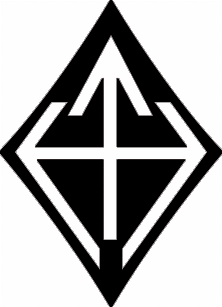ONCE WE RULED THE WORLD
by TOM HERCK
Dinosaurs, captivating across ages and cultures, hold a prominent place in Earth's history, contrasting with the relatively young Homo sapiens, who emerged 300,000 years ago. Herck reflects on humanity's evolution amidst the digital revolution. The extinction of non-avian dinosaurs 66 million years ago paved the way for mammals and eventually humans. Despite lacking physical prowess compared to dinosaurs, humans dominate as apex predators due to advanced cognitive abilities, tools, and social structures.
The project's title, "Once We Ruled The World," inaugurates a captivating series of monumental installations intertwining human and dinosaur skeletons, serving as a poignant exploration of human ego and vanity. The artist's introspection is evident in the exact replication of his own skull, prompting deeper reflection on themes of extinction and evolution.
In a speculative portrayal of cohabitation in the 21st century, the potential reintroduction of dinosaurs alongside Homo sapiens suggests a renewed risk of extinction. The prospect of domestication for sustenance, labor, and companionship invites contemplation on the cyclical patterns of dominance and decline. Notably, within the specific installation titled "The Fisherman," a symbolic narrative unfolds as a representation of human ego engages in unconventional fishing atop a plesiosaurus. Here, the fusion of ancient and modern elements—such as the use of a USB wire for fishing—serves as a poignant commentary on the encroaching digital revolution and the potential emergence of new human species, ultimately challenging the reign of Homo sapiens.
In conjunction with the 60th International Art Exhibition of the Venice Biennale, the distinguished Belgian contemporary artist, Tom Herck, unveils his avant-garde public artinstallation, "Once We Ruled the World." Gracing the serene Garden of Palazzo Balbi Valier,this installation asserts a compelling presence, visible from the historic Grand Canal inVenice, Italy.
The focal point of this installation, "Once We Ruled the World," stands as a monumental testament to Herck's artistic prowess, featuring a skeletal sculpture that stretches to an imposing height. This sculptural marvel symbolizes the intricate relationship between humans and the bygone era of dinosaurs, igniting a reflective discourse on our historical connections, ecological impact, and the nuanced aspects of human vanity.
Echoing Herck's insightful perspective, the work masterfully captures the essence of Venice as a city teetering between its glorious past and an uncertain future. With a profound resonance to the theme of transience, the installation serves as a poignant 'Memento Mori,' echoing the city's his-torical struggle with existential threats that swept through Venice during the historic plagues.
The installation, in its symbolic representation, bridges the gap between the past and the present, inviting viewers to contemplate Venice's enduring spirit and its ability to navigate the uncertainties through time. Through this majestic representation, Herck probes the dualistic nature of humanity's existence as both guardians and conquerors of ancient life, challenging viewers to contemplate our role in the continuum of time and our influence on Earth's future. His work, steeped in themes of dominion and existential cycles, resonates profoundly with the Biennale's thematic explorations, positioning itself as a bold and introspective commentary on the evolution of human interaction with the natural world.
His installations, a powerful medium for reflection and dialogue, underscore his ability to inspire and shape our collective future. Herck's work, embedded with a deep commitment to societal reflection and discourse, positions him as a significant voice in contemporary art, continually exploring new narratives and challenging boundaries with diverse and unconventional mediums. “
Vernissage and Finnisage in Venice by Altamura Distilleries.








